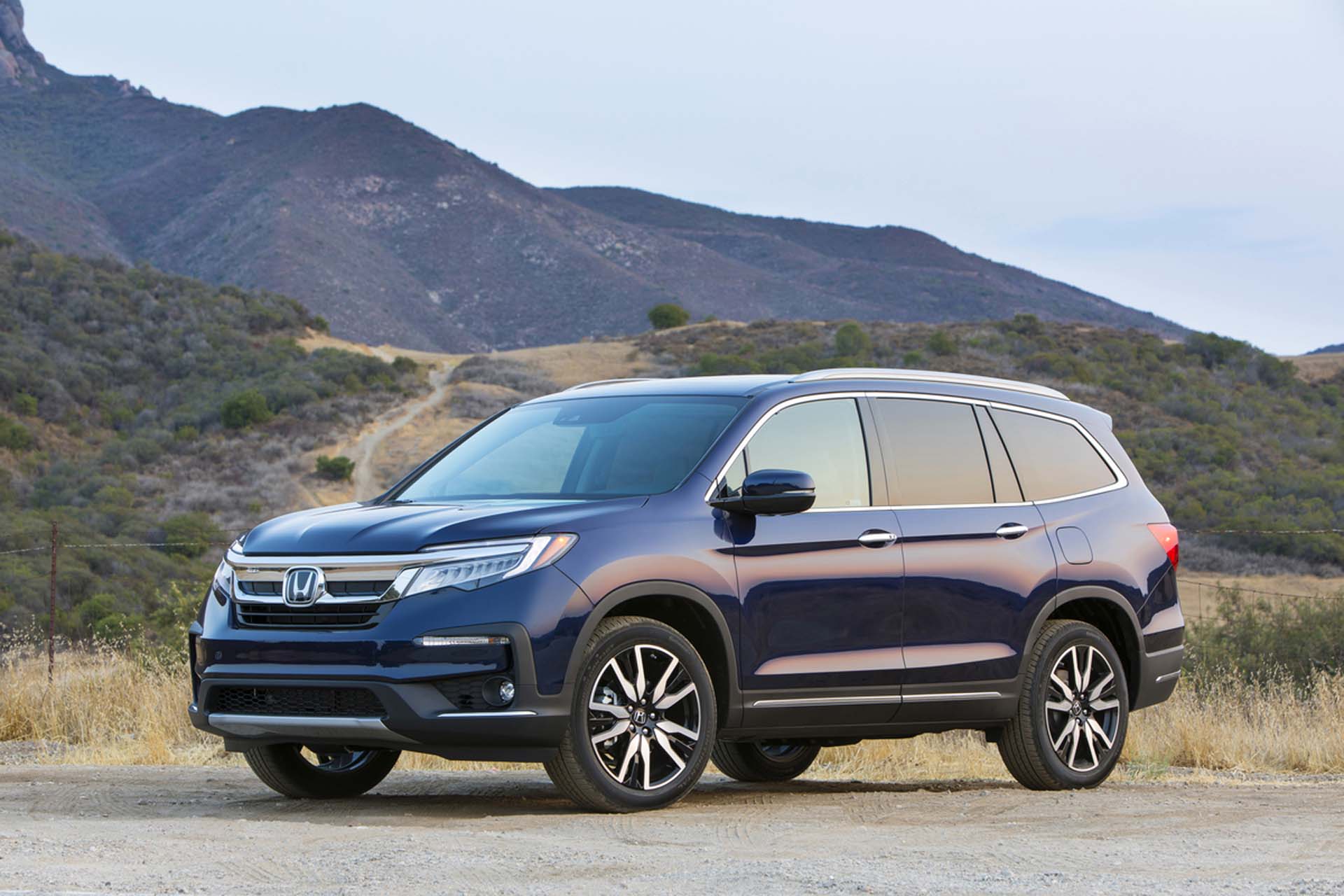
A lackluster base version keeps the 2020 Pilot from reaching higher on our features score. Our features score may stop at those versions, but we suggest shoppers keep walking.
Starting from an average score, the Pilot narrowly misses out on extra points because of its small base infotainment screen, but we give it a point for the Pilot EX’s stellar value. It’s a 6. (Read more about how we rate cars.)
Honda offers LX, EX, EX-L, Touring, Elite, and Black editions of the Pilot. That last one is new and costs more than $50,000, which encroaches on luxury-car turf. More on that in a minute.
The base LX is spartan and doesn’t include many creature comforts for its low price of just over $32,000. On top of 18-inch wheels, the LX gets cloth upholstery, seats for eight, active safety features (that we cover above), a 5.0-inch display for audio without smartphone compatibility and one USB charge port. All-wheel drive is a $2,000 option.
We’d opt instead for a Pilot EX, which costs $35,525 for front-drive models. All-wheel drive is $2,000 more. The Pilot EX adds upgraded 18-inch wheels, blind-spot monitors, an 8.0-inch touchscreen for infotainment including Apple CarPlay and Android Auto compatibility, three-zone automatic climate controls, power-adjustable driver’s seat, heated front seats, and two USB charge ports. Pilot EX-Ls add leather upholstery, a moonroof, and rear sunshades for $3,400 more.
The top-of-the-line Pilot Touring and Black Edition models cost about $50,000 and throw everything at the Honda hauler. Leather, standard all-wheel drive, heated and cooled front seats, a panoramic moonroof, uprated audio system, wireless phone charger, and 9-speed automatic transmission are all included in the tony models. Touring and Black Edition models are virtually the same except, you guessed it, the Black Edition is mostly black.
Honda infotainment
Most Pilots will be fitted with an 8.0-inch touchscreen for infotainment that’s easy to learn and quickly configurable. A hard knob for volume is the only redundant control on the head unit, everything else uses the touchscreen, including radio tuning. The screen doesn’t wash out in direct sunlight and the screen is mostly responsive to our touch inputs. Honda’s built-in navigation isn’t as slick as smartphone-based systems such as Google Maps or Waze, so we happily plug in our phones to the system for those perks.
Base models are the only Pilots with one USB charge port. Most Pilots have two or more, including two more in the rear for passengers in the back.
Review continues below
0 Kommentarer